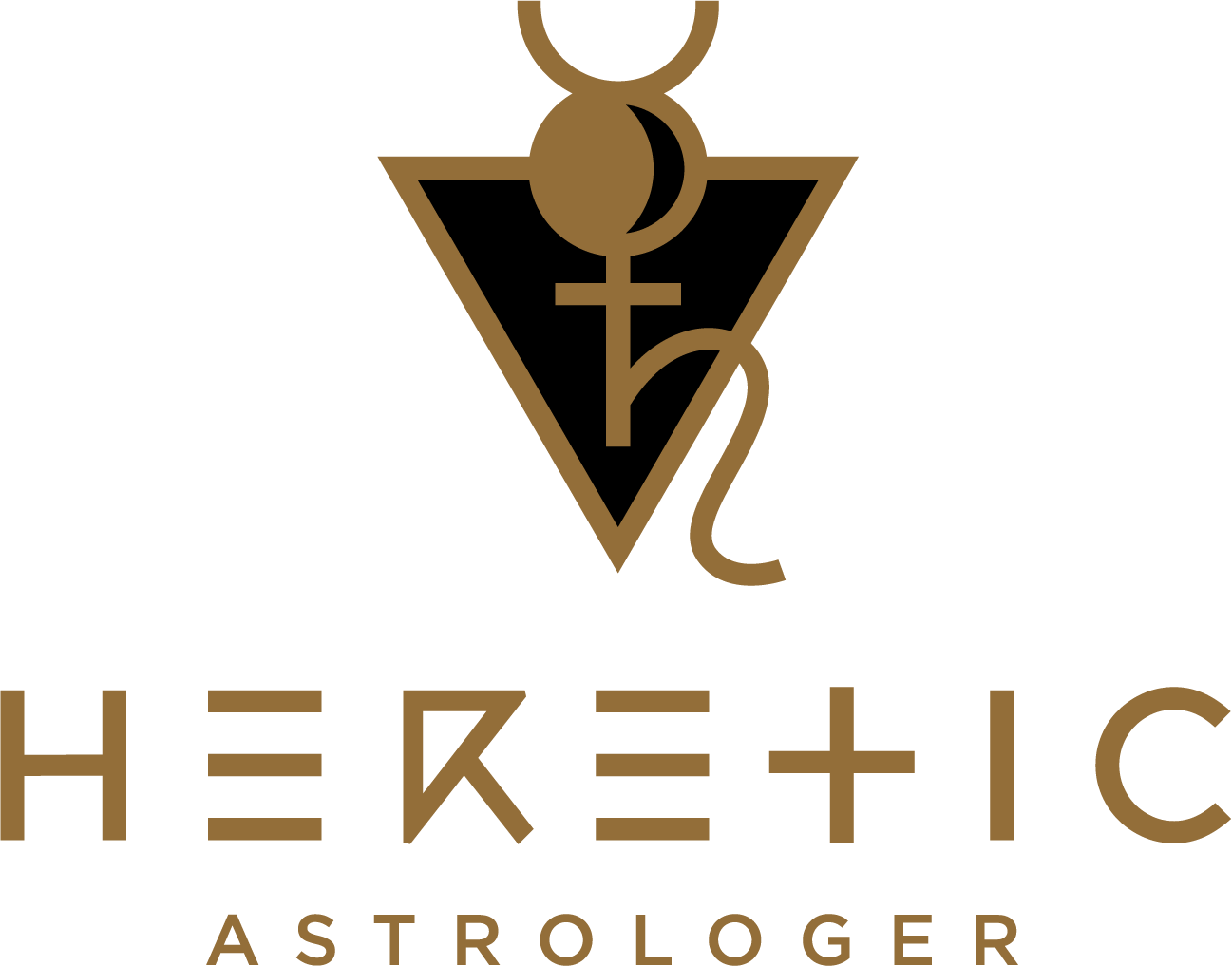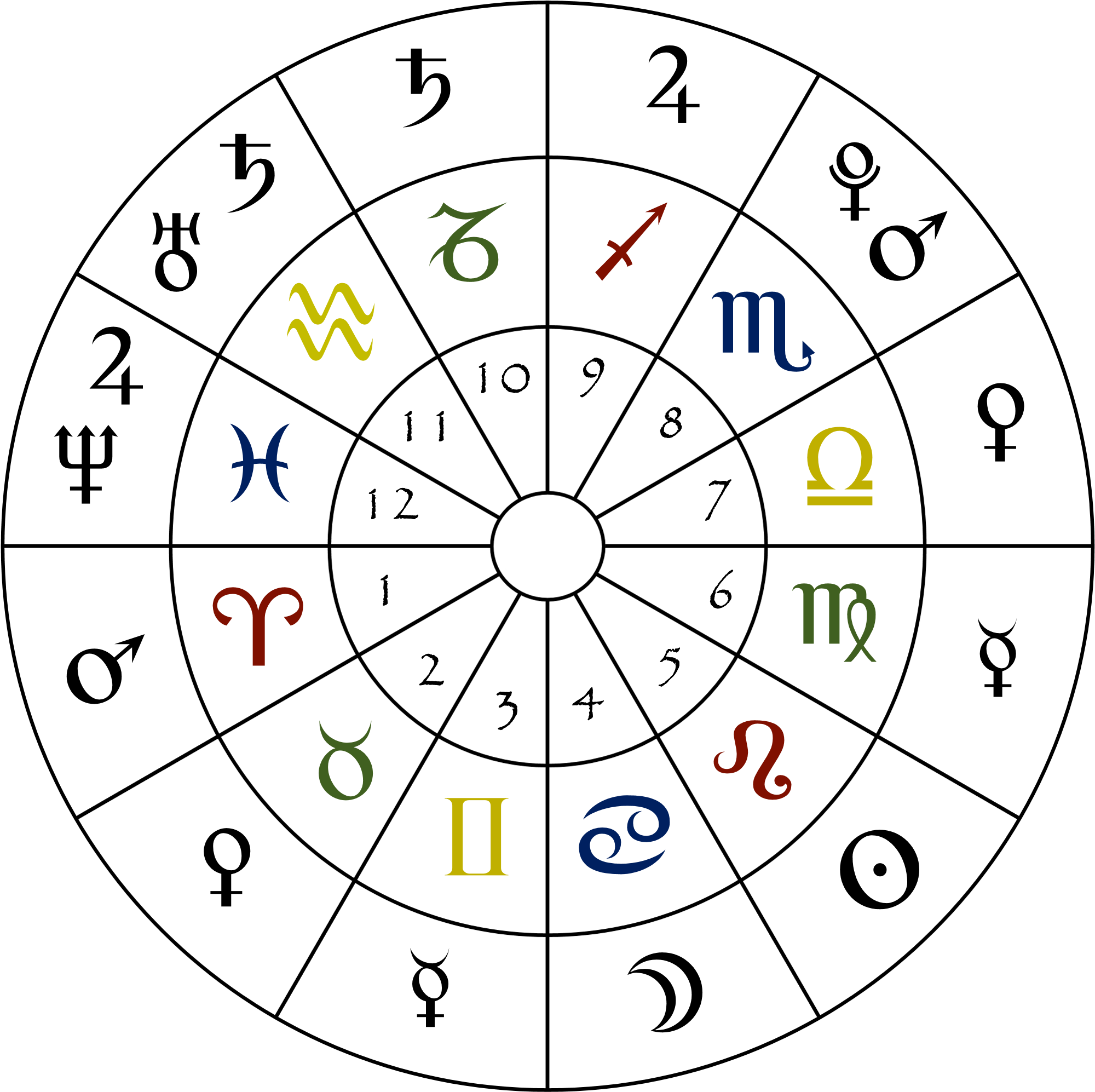
chart basics
step one.
get your chart.
The one pictured was generated here. I like the look of these charts because it makes it very easy to identify the different components and symbols. Regardless of what your chart looks like, they will all contain a similar layout with common symbols. After finishing this Chart Basics section, you will be able to identify the planets, signs, houses, and aspects that make up your natal horoscope.
Astrological Birth Chart of a Native born on July 20, 1970 in Los Angeles, CA at 8:03am
First, let’s look at the basic structure of the chart before we dive into more of the details.
Imagine your chart is a pizza. The slices of the pizza are the Houses of the Zodiac. More on those later. At this point just identify the houses on your chart. They will probably have numbers from 1-12, though some use Roman numerals and list the houses as I-XII. The black lines that make up the slices are known as cusps.
Somewhere just inside the crust of the pizza slices you will find some symbols distributed along the circle of the chart. Most of these are planetary symbols - ten in modern Astrology - however you probably have a few that are abbreviations (e.g. AC (or ASC), MC, and IC). Also, everybody knows the the Sun and Moon are not planets - so don’t let that categorization trip you up. You can also say the Sun, Moon, and Planets if that makes you feel better ;)
Around the outer ring - the crust in our pizza analogy - are the twelve signs represented by their respective glyphs. Notice they don’t line up with the house cusps. This is because the signs rotate around the houses throughout the day.
And finally, the lines (typically blue and red) drawn between the symbols on the inside of the crust are called aspects.
Don’t worry about knowing what these symbols, lines and slices mean at this point. The goal here is to be able to identify the different parts of the chart.
planetary symbols.
The symbols for the planets are pictured here, broken out into categories recognized by modern Astrology. Though there are ten planets in our current system, classically, only seven planets were known - The Sun, The Moon, Mercury, Venus, Mars, Jupiter and Saturn. And yes, Astrology understands the Sun and Moon are not planets. They are referred to as Soulful Luminaries and are simply categorized with the other objects, most of which are planets.
The additoinal three - Uranus, Neptune, and Pluto - were discovered with the advent of more powerful telescopes starting in the late18th century. They are outer planets and take years to move through the Zodiac. For instance, Pluto spends over 20 years in the same sign, taking 246 years to move through all twelve signs. For this reason, they are thought to have more of a global or generational influence rather than a personal one.
sign glyphs.
These are the symbols typically used to represent the signs.
Each symbol is a glyph. Some have their roots in Greek mythology. Others likely were borrowed from Alchemy.
The only sign not represented by an animal or person is the sign of Libra whose glyph depicts a scale. You might be thinking, “What’s up with Aquarius though? It doesn’t look like an animal or a person.” True, the glyph depicts water, but this is representing the actual archetype which is “The Water Bearer”, the person pouring the water. Aquarius is typically depicted by a man in art.
houses on the chart.
As stated above, those pizza slices are the Houses.
The houses are a static image our ancient astrologer progenitors projected onto the sky. It doesn’t move, rotate or change throughout the day. They are containers that the planets and signs move around. Your chart is a snapshot of where the planets were relative to the signs. However, throughout the day, the motion of the Earth makes it appear that the zodiac is rotating in the sky. Every two hours a new sign “rises” into the first house. The sign in this house is referred to as the “Rising Sign” (or Ascendant). Remember, the houses are not moving or rotating, but the circle of signs, with the planets in them, makes one full rotation around the houses every 24 hours. Thus, people born on the same exact day will have their planets in the same signs, however, depending on the time of day, their Rising Sign and which houses the planets are found in are very different. Differences that can have drastic impacts on their personality.
Each house is delineated by its leading cusp which is defined as the point where a house begins. These are typically illustrated on your chart as black lines.
The houses are numbered 1 through 12 (or I-XII) and begin at the 9 o’clock position, proceeding around counter-clockwise to the twelfth house, at which point the cycle starts over at the cusp of the first house at that same 9 o’clock position.
aspects on the chart.
The straight lines - typically blue and red - drawn between various planets and points on your chart are known as aspects.
Aspects provide a deeper layer of complexity to a chart reading as they represent the conversations and relationships happening between the objects connected by the aspect.
Some are easy and complimentary. Others create tension, and even opposition, between planets.
Aspects are more of an advanced topic, so at this point, just be able to identify what these lines are, and not what they mean quite yet.





